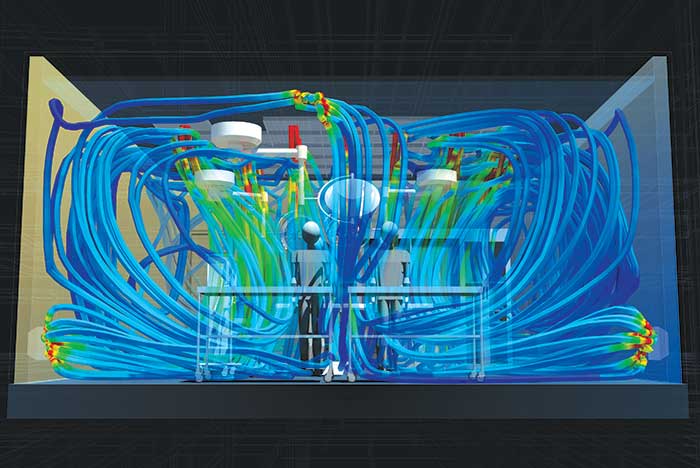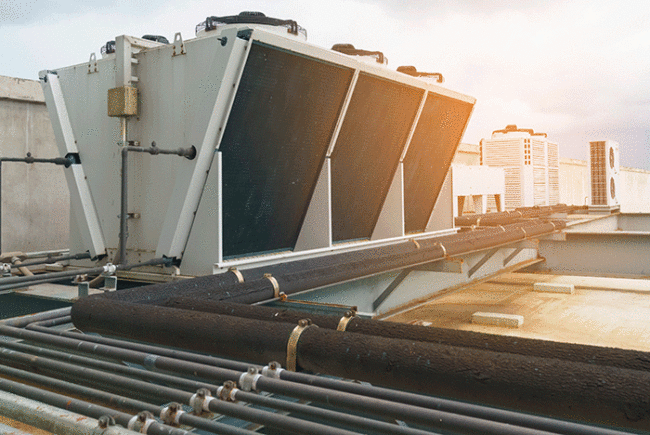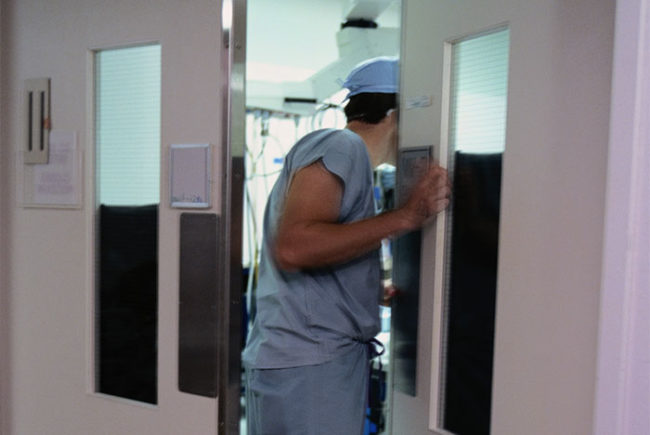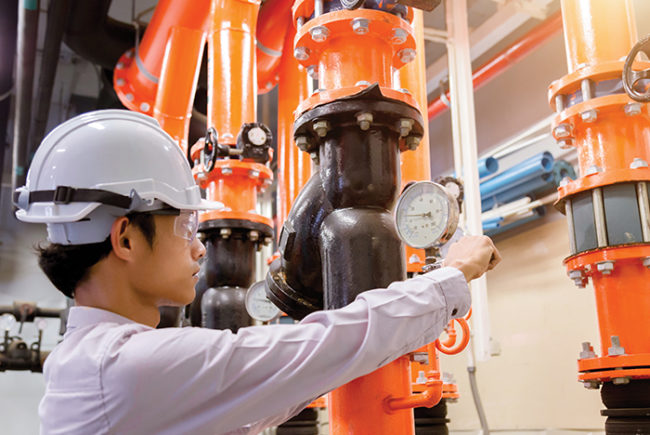
Autodesk Inc.’s computational fluid dynamics modeling software can be used to test various operating room air-circulation scenarios.
Hospital air quality has always required complicated trade-offs among air turnover rates, energy use, humidity levels, filtration parameters, flow velocity and temperature controls with patient safety and comfort remaining paramount, so it’s perhaps not surprising that much research on hospital engineering is focused there.

|
2017 Trends: Infrastructure |
| Previous: Identifying design dangers |
|
|
These efforts into air-circulation issues are centered on professional societies, governmental agencies and equipment manufacturers.
“Everyone is trying to learn more about how diseases propagate within a health care facility and what can mechanical engineers do about it,” says Michael Meteyer, PE, mechanical engineering manager at Erdman, Madison, Wis., and chair of the American Society of Heating, Refrigerating and Air-Conditioning Engineers’ (ASHRAE’s) Technical Committee 9.6 Healthcare Facilities.
Current ventilation standards, guidelines and codes for health care facilities are being challenged to have the requirements more grounded in research and evidence-based data especially if the requirement increases operational costs. “There's still a lot of uncertainly on exactly what the right requirements are, what will be their impact be on patient outcomes, HAI’s and operational costs,” Meteyer says.
He points to the role of humidity in health care-associated infections (HAIs) as a particularly fraught area in which clinical expert may not always agree. Last year, an ASHRAE sponsored research project was published on the topic and is currently being digested to see where the research should go next.
Other projects include research on the supporting evidence and rationale behind the American National Standards Institute (ANSI)/American Society for Healthcare Engineering/ASHRAE Standard 170, Ventilation of Health Care Facilities, and determining the best ways to put ANSI/ASHRAE Standard 188, Legionellosis: Risk Management for Building Water Systems, into practice.
On the government side, air handling and HAIs also have attracted the attention of the Centers for Disease Control and Prevention’s (CDC’s) Prevention Epicenters Program, which collaborates with investigators from 11 academic medical centers.
“As a research question, the Epicenters are not directly focused on airflow at the moment, but our division has definitely been involved in understanding air handling, especially in operating rooms (ORs) and recommendations related to air handling in health care facilities,” says Sujan Reddy, M.D., medical director for the Prevention Epicenters Program.
Another area of focus has been aerosolization’s role in HAIs, Reddy says.
“[The University of Iowa Epicenter] is doing a study on understanding toilets and how toilets can contribute to infections like Clostridium difficile,” Reddy says. “We’re also doing studies looking at aerosolization after patient care activities.”
Finally, large and small manufacturers are looking into air-circulation challenges. Among the latter, SLD Technology LLC, Milwaukie, Ore., attracted attention in February 2014 with a cover story in the ASHRAE Journal on using cleanroom technology to improve OR circulation.
“I grew up working with Intel [Hillsboro, Ore.], which has one of the cleanest environments on the planet,” says Kevin Schreiber, SLD’s founder and president. “It occurred to me that we could be using some of that technology to help control contamination in an OR and reduce these infections for health care.”
Working with Autodesk Inc., San Rafael, Calif., Schreiber has been using computational fluid dynamic modeling to test the efficacy of a single, large diffuser design as an effective and modular OR air-circulation system that may require fewer air changes.
Air-quality research likely will continue to accelerate as hospitals, ambulatory facilities and clinics continue to push for safe, comforting and energy-efficient environments for their patients.





